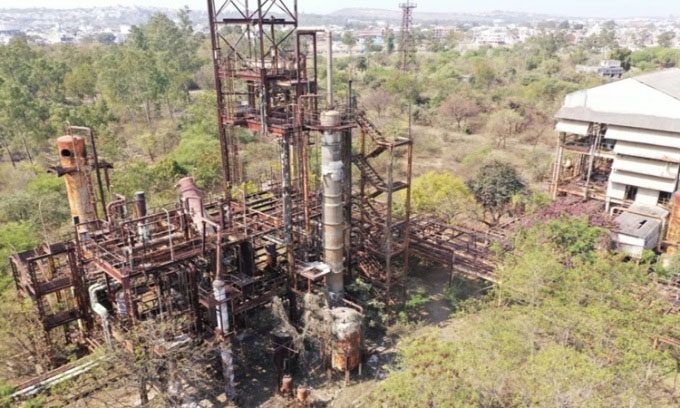Nearly 40 years ago, a pesticide plant in Bhopal released toxic gas into the environment, leading to the immediate deaths of thousands and many more young lives lost.
In 1984, a city in India experienced the worst industrial disaster on Earth. The catastrophe occurred on the night of December 3 of that year, when the Union Carbide pesticide plant in Bhopal leaked approximately 40 tons of methyl isocyanate, a highly toxic gas with a pungent odor that spread within a 7km radius around the facility, according to IFL Science.

Ruins of the Union Carbide plant in Bhopal. (Photo: Paulose NK).
The gas cloud hung close to the ground and swept through the cheap housing surrounding the plant. Victims exposed to the toxic gas writhed in pain and succumbed after severe vomiting, burning eyes, and foaming at the mouth. According to Amnesty International, 7,000 people died in the following three days, with countless others injured. This was just the beginning of a nightmare. Over the next three decades, around 30,000 deaths in the area were attributed to the incident, due to the long-term effects of the chemical leak on human health and the surrounding environment.
In June 2023, a research team at the University of California San Diego published a paper examining the prolonged impact of the disaster and concluded that its effects were much more extensive than previously estimated. To reach this conclusion, the research team surveyed 47,817 individuals aged 15 to 49 living in Madhya Pradesh from 2015 to 2016, as well as socioeconomic data on 13,369 men born between 1960 and 1990, combining data from 1,250 individuals born between 1981 and 1985 within a 250 km radius of Bhopal.
“There are serious chronic and long-term health consequences for thousands of survivors, including respiratory, neurological, musculoskeletal, ophthalmic, and endocrine diseases“, said Prashant Bharadwaj, co-author of the study and professor in the Department of Economics at the University of California San Diego.
The research team also found evidence of the long-term impact across generations of the disaster, particularly in children born at the time of the accident. After the leak, the miscarriage rate quadrupled, and the risk of stillbirths and neonatal deaths increased.
Many victims of the disaster are still seeking justice. In 1989, Union Carbide agreed to pay $470 million to those affected by the plant leak. Activists continue to push for greater compensation, but it has been a difficult battle. In March 2023, the Supreme Court of India rejected a petition for increased compensation. The team of experts at the University of California San Diego hopes that the research published in their article in BMJ Open can provide additional evidence necessary to determine the true extent of the damage from the disaster.


















































